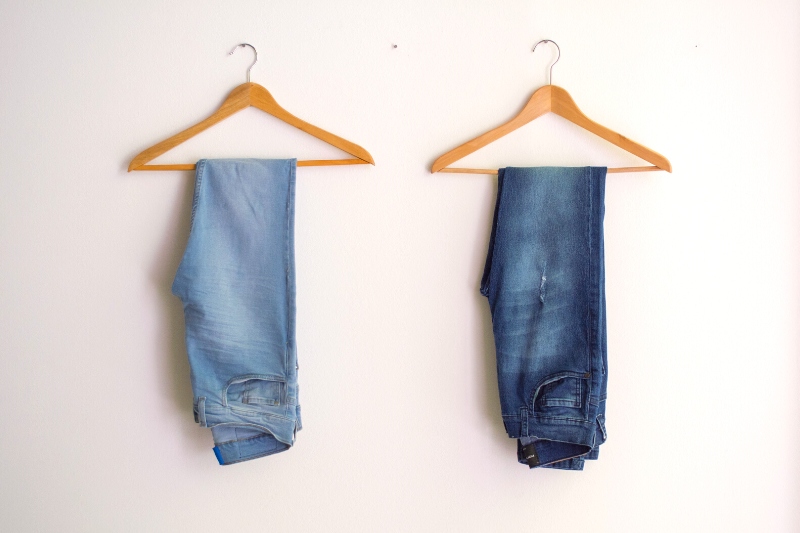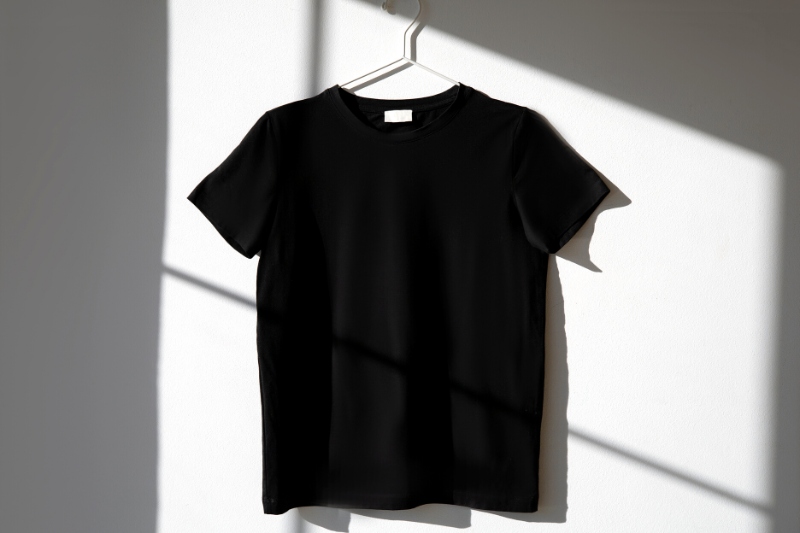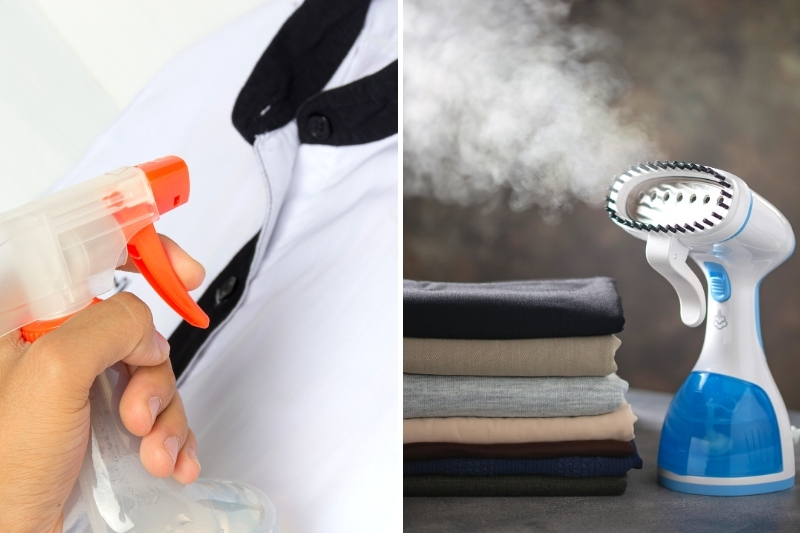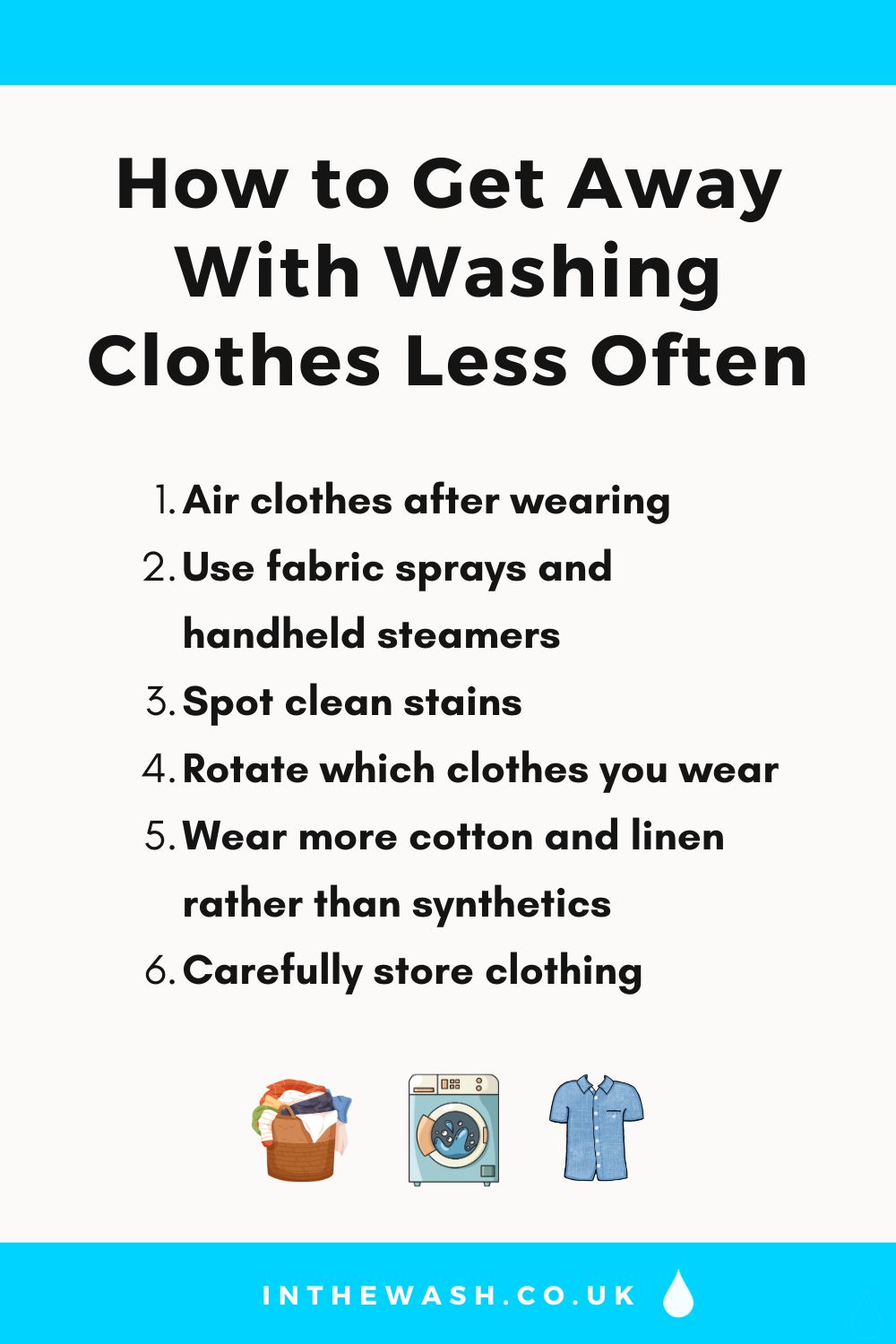Do you dread the hours you spend each week doing your laundry?
From sorting to washing, drying, and putting it all away, laundering your clothes soon becomes a time-consuming chore.
Even worse, frequent washing soon becomes costly, ramping up your energy bills and water usage.
But what if there was a way to reduce the amount of washing you have without compromising on the cleanliness of your clothes?
In this article, we’ll teach you how to wash clothes less often and cover some of the many benefits of cutting down on your weekly laundry load.
Top Tips for Washing Clothes Less Often
Clothes that have been worn inevitably get dirty and need to be washed so that they’re clean and fresh once more. However, it is possible to cut down on the amount of laundry you have to do, making this task less of a burden.
Try some of the tips we have covered below to significantly reduce your washing pile for good!
1. Wear clothes multiple times

Do you throw your clothes straight into the wash after wearing them? If so, you’re not alone. This is a common part of many people’s daily routine, but it’s not always necessary.
In fact, the majority of your wardrobe can be worn multiple times before needing a wash.
Many items of clothing, including jeans, tops, and skirts, can be worn at least twice before they start looking and smelling worse for wear.
In most cases, you can simply inspect your clothing at the end of the day for any unwanted marks or odours.
If the garment seems fine, it can go back into your wardrobe for another day.
The only exceptions to this are underwear and workout clothes, which must be washed every time they are worn.
You must also be careful not to let odours or bacteria build up on the fabric, as this can cause nasty germs to spread around your home.
N.B. For a full guide on how often you should wash your clothes, you can read this article here.
2. Air clothes after wearing

After wearing an item of clothing all day, it is not uncommon for it to have picked up a slight odour.
Some smells won’t come out without washing, but many can be removed by airing your clothes.
This is where you hang your garment in a spaced-out area so that air can circulate around the fabric.
Airing is one of the easiest ways to freshen up your clothes between washes.
It works best when used on clothes made of natural fibres, but you’ll still notice an improvement when airing synthetic materials, such as polyester and nylon.
If you have a tumble dryer, you can also use the air dry setting to the same effect. This setting doesn’t use any heat, so your clothing will be quickly aired out without any risk of shrinkage.
3. Use fabric sprays and handheld steamers

Many products on the market have been specifically designed to keep your clothes looking and smelling great between washes. Among these are scented fabric sprays and handheld steamers.
Fabric sprays come in various scents to suit anyone’s preference.
They can be combined with airing or used on their own as a standalone product to freshen up worn garments and leave them with a clean smell. To use, simply spray the product lightly all over the fabric.
Although less proficient than fabric sprays, handheld steamers can also help to remove faint odours due to the high temperature of the steam.
These handy devices are particularly useful when dealing with fabrics that are prone to wrinkling.
According to The Guardian, they can quickly and easily smooth out the fabric, making it look as if it has been freshly washed and ironed.
4. Spot clean stains

When you spill something down your front, it is second nature to throw that item in the wash and hope the stain comes out.
While this is effective, you can save yourself the hassle of washing the entire garment and potentially get better results by simply spot-cleaning the stain instead.
We suggest you always keep a good stain remover in your home so that you can quickly tackle any stains as soon as they occur.
You will need to lightly blot the stain with a paper towel, apply the remover according to the label instructions, and then rinse the affected area in the sink.
5. Rotate which clothes you wear

This next tip may seem obvious, but try to rotate which items of clothing you wear each day rather than wearing the same garments repeatedly.
Of course, this is not always possible, especially when you only have a small wardrobe. However, we suggest doing so whenever you can.
Allowing for a longer gap between wears will allow your clothing items to air out for an extended period of time, meaning they can last longer between washes.
It also means that any clothing that does need washing can remain in the basket for longer, as you’ll have other garments to wear.
You can then do larger, less frequent laundry loads instead.
6. Invest in quality clothing

As many of us know, synthetic fibres such as acrylic and polyester are much less breathable than natural fibres.
This means they tend to make us sweat more, and they are more prone to holding onto unwanted odours.
By taking the time and money to find quality items of clothing that use more natural materials, you can wear each article of clothing more times before it needs a wash.
For example, on warmer days, garments made of synthetic fabrics will likely need to be washed after one wear, while those made of cotton or linen can still go for two or more.
7. Avoid overloading the washing machine

When doing a load of laundry, it can be tempting to overload the drum so that more items of clothing are washed at the same time.
While this works to an extent, it also puts a strain on your washer, resulting in your clothes coming out still the worse for wear.
By following your washing machine’s guidelines on load capacity, you can be assured that all your clothing will come out of the washer in top condition.
This means you won’t have to rewash clothing that comes out with marks or odours still clinging to the fabric.
8. Carefully store your clothing

Our final tip for keeping your clothes looking and feeling fresh between wears is to store them correctly.
Many people have a tendency to crumple up their clothes after wearing them, whether that be on the floor, at the bottom of their wardrobe, or stuffed into a drawer.
This will not only cause wrinkles in your clothing but also trap dirt and odours in the fabric.
Instead, we suggest always folding or hanging clothes up and neatly putting them away once you are done with them.
If desired, you can also add a scented sachet or drawer liner to your storage space to help keep your clothes smelling even fresher.

What Are the Benefits of Washing Clothes Less Often?
Washing clothing less often has a variety of benefits you may be unaware of. As well as saving you time and energy in doing frequent loads of laundry, it can also:
- Save money: The cost of doing your laundry soon adds up, especially when you have a large family. By washing your clothes less often, you can save money on water usage, energy bills, and laundry products, such as detergent and fabric softener.
- Extend your clothes’ lifespan: The harsh conditions within a washing machine can reduce your clothing’s lifespan. This is because the high levels of heat and friction can fade, shrink, and damage the fabric. Washing your clothing less frequently and according to the care label instructions will help your clothes last much longer.
- Benefit the environment: Washing your clothes less frequently has a positive impact on the environment. By cutting down on your washes, you are helping to conserve water, reduce your energy consumption, and use less laundry detergent, therefore reducing your carbon footprint.

Hannah has a passion for cleaning. She worked her way around Australia by cleaning hostels in exchange for free accommodation and used her cleaning skills to bag a job as a chalet host for a luxury ski company in France.






